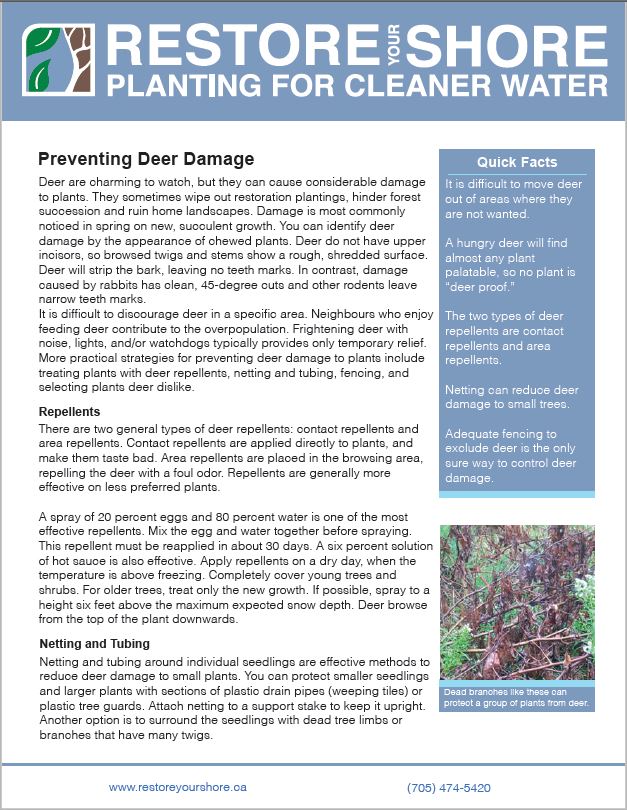Preventing Deer Damage
Deer are charming to watch, but they can cause considerable damage to plants. They sometimes wipe out restoration plantings, hinder forest succession and ruin home landscapes. Damage is most commonly noticed in spring on new, succulent growth. You can identify deer damage by the appearance of chewed plants. Deer do not have upper incisors, so browsed twigs and stems show a rough, shredded surface. Deer will strip the bark, leaving no teeth marks. In contrast, damage caused by rabbits has clean, 45-degree cuts and other rodents leave narrow teeth marks.
It is difficult to discourage deer in a specific area. Neighbours who enjoy feeding deer contribute to the overpopulation. Frightening deer with noise, lights, and/or watchdogs typically provides only temporary relief. More practical strategies for preventing deer damage to plants include treating plants with deer repellents, netting and tubing, fencing, and selecting plants deer dislike.
Repellents
There are two general types of deer repellents: contact repellents and area repellents. Contact repellents are applied directly to plants, and make them taste bad. Area repellents are placed in the browsing area, repelling the deer with a foul odor. Repellents are generally more effective on less preferred plants.
A spray of 20 percent eggs and 80 percent water is one of the most effective repellents. Mix the egg and water together before spraying. This repellent must be reapplied in about 30 days. A six percent solution of hot sauce is also effective. Apply repellents on a dry day, when the temperature is above freezing. Completely cover young trees and shrubs. For older trees, treat only the new growth. If possible, spray to a height six feet above the maximum expected snow depth. Deer browse from the top of the plant downwards.
Download
Download Preventing Deer Damage Brochure
